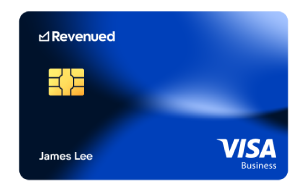How to Create an Annual Business Budget
How to Create an Annual Business Budget
Your company’s annual budget is an overview of your business finances — both current and future. It is an essential planning tool that allows you to see your financial health at a glance and chart a course for the coming year.
If you’re like most small business owners today, you feel like you’re spending every waking moment just trying to keep your head above water. You know that a detailed annual budget will help, but the task seems daunting. So, where do you begin?
Creating an annual business budget doesn’t have to be complicated, but you can take steps to ensure it shows the entire financial picture. By including all of the fundamental components listed below, you create a more accurate and trustworthy annual budget to serve as a guide for your company.
What Should Be Included in My Annual Budget?
The most useful annual budget will be both organized and adaptable. Data should be grouped into categories so you can find what you need at a glance. You should also see the impact new numbers will have on your bottom line if anything changes. This will make it easier for you to adjust your budget as needed and keep your cash flow on track.
Make sure you include all of the following financial data in your annual budget:
Gross Projected Revenue
The first step in building a budget is to estimate how much money will be coming into your business every month and where it’s coming from. To make this forecast, you may be able to look at your past years’ revenue. If your company is too young to have a sales track record to draw from, you can use industry averages instead.
Fixed Expenses
Once you know how much is coming in, it is time to turn your attention to how much money is going out. Start with the most specific cost category — the fixed cost. A fixed cost is a predictable month-to-month expense that includes things like:
- Your rent or mortgage payment
- Flat-rate internet and phone plans
- Bank fees
- Insurance premiums
- Accounting services
- Legal services
- Leases on equipment
- Payroll costs
Variable Expenses
Some expenses are tied to revenue or are less predictable; therefore, they could change monthly. Include estimates for these items in the variable expense portion of your budget:
- Inventory purchases
- Shipping costs
- Office supplies
- Usage-based utilities like gas and electric
- Bonuses and commissions paid to employees
- Additional payroll and training of new hires
- Taxes
Add your variable costs together at the end of each month and review them when projecting next year’s budget. Spotting the patterns and seasonal fluctuations will help you make more precise variable expense predictions and a more realistic budget.
Learn more about balance sheet vs income statement: what's the difference.
Capital Expenditures
These are often more considerable expenses that don’t occur every month or even every year. You can plan for some of these in advance and set aside money monthly to prepare; however, other unexpected costs may catch you off guard. Build an emergency fund into your budget projections to ensure that you have the working capital needed to cover the unexpected.
Capital expenditure examples include:
- Replacing worn-out equipment, vehicles, or office furniture
- Updated computers or software systems
- Leasing or purchasing a larger office space or warehouse
- Replacing a damaged cell phone
- Hiring an IT consultant after a security breach
Profit Calculations
Add up the dollar amounts in each category to get your income and expense totals. Then subtract the three expense figures from your projected revenue to see your anticipated profits for the year.
If profits are not what you’d like them to be and your expenses are greater than your revenue, consider ways to boost your bottom line. This could include:
- Increasing sales revenue
- Attracting new clients
- Renegotiating your service contracts with vendors
- Shopping around for lower insurance premiums
- Moving to smaller offices or finding a new space that charges less per square foot
On the other hand, profits might be more significant than you were expecting. If this is the case, create a cash reserves account or seek out ways to invest that money back into your business.
Edit and Adapt Your Budget Throughout the Year
Part of the budget creation process is the need to continue creating it throughout the fiscal year. Annual business budgets can’t be filed away and forgotten. They should be monitored and tweaked regularly to ensure your company’s finances remain on track.
If you see significant differences between your projections and reality, scrutinize the reasons behind the discrepancy. If you can learn to anticipate your bottom line with greater accuracy, it will empower you to make more intuitive financial decisions.
Learn more about what happens if my company goes bankrupt.
Prepare for the Unexpected with the Revenued Business Card
The Revenued Business Card is an innovative financial solution based on revenue, not credit, that helps you bridge budget gaps. It features straightforward qualification requirements, a flexible spending limit, and access to funds you can use to pay virtually any of your business expenses.
RELATED ARTICLES
Revenued Business Flex Line vs Ecommerce Revenue Based Financing
Learn MoreRevenued Flex Line Pricing vs. (MCA): A Comparative Analysis
Learn MoreWhat is My Business’ Credit Utilization Ratio?
Learn MoreWhy is Cash Flow Important to Your Business?
Learn More
Boost your spending power with the Revenued Business Card
Only pay for what you use at gas stations, hotels, supply stores, supermarkets and more.
Take control with the Flex Line
Check your available balance online and request a cash draw with the tap of your finger, anytime.

